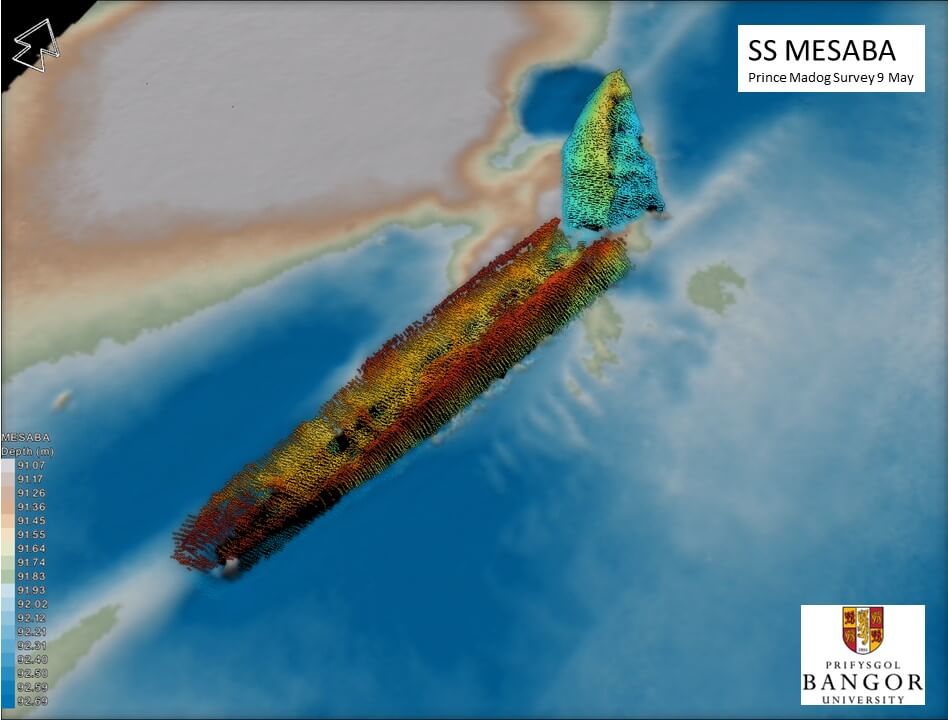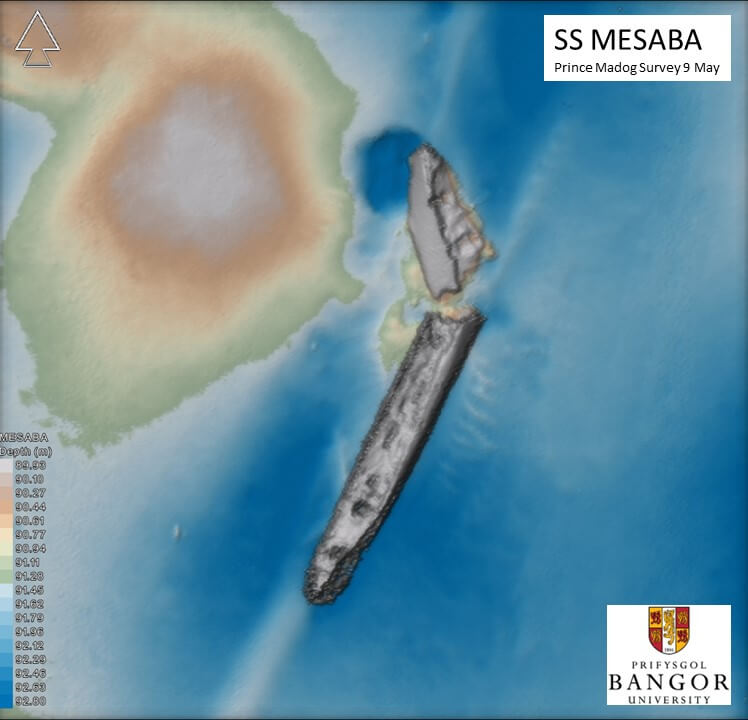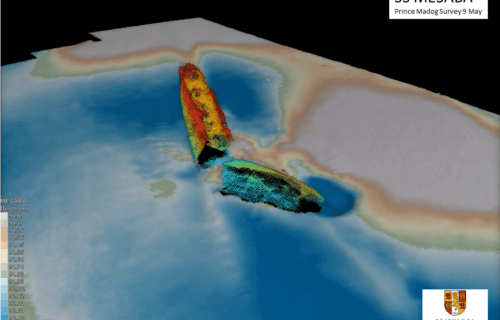BANGOR, Wales — The sinking of the Titanic in 1912 is a storied piece of history forever immortalized in pop culture by the classic ’90s film. Touted as the “unsinkable ship,” the Titanic’s legacy serves to remind us all that overconfidence often leads to disaster. Far less people are aware, however, that the Titanic actually received a warning message about the iceberg that would be its downfall from a nearby merchant vessel crossing the Atlantic.
That merchant steamship, the SS Mesaba, suffered a similarly watery fate when it was torpedoed by a German U-boat six years later in 1918. For over a century the SS Mesaba had been lost, but powerful new technology has finally led to its discovery in the Irish Sea.
In a true “what if?” scenario, the warning radio message sent out by the SS Mesaba did in fact reach the Titanic, but the prophetic warning didn’t make it to the bridge in time to avoid the collision. Mere hours later, the supposedly unsinkable ship rammed into an iceberg and sank, claiming the lives of 1,500 passengers. Coincidentally, both the Titanic and Mesaba were built in the same location: Belfast, Northern Ireland.
Scientists at Bangor University used a state-of-the art multibeam sonar system to positively identify the SS Mesaba wreckage, and pinpoint its location underwater. The research team explains that this new multibeam sonar technology can be a game changer for marine biologists, similar to what aerial photography was for landscape archaeology.

This advanced new technology enables seabed mapping in such fine detail that “superstructures” (ship wreckages) can be identified on the sonar images. Notably, the SS Mesaba is far from alone down below. Researchers estimate it is just one of 273 shipwrecks lying within 7500 square miles of the Irish Sea. That entire area was scanned and cross-referenced against the U.K. Hydrographic Office’s database of wrecks, as well as additional sources, by the research team.
Finding the Titanic’s near-savior a ‘game-changer’ for marine tech
Prior to this work it was thought that 101 wrecks in the Irish Sea were unidentified, but clearly that number was too low. Further details on the discovery of the SS Mesaba, and all of the other wrecks, can be found in the recently published book Echoes from the Deep written by Dr. Innes McCartney of Bangor University, conducted under a Leverhulme Fellowship while at Bournemouth University.
“The results of the work described in the book has validated the multidisciplinary technique employed and it is a ‘game-changer’ for marine archaeology,” Dr. McCartney says in a statement. “Previously we would be able to dive to a few sites a year to visually identify wrecks. The Prince Madog’s unique sonar capabilities has enabled us to develop a relatively low-cost means of examining the wrecks. We can connect this back to the historical information without costly physical interaction with each site. It should be of key interest to marine scientists, environmental agencies, hydrographers, heritage managers, maritime archaeologists, and historians.”
Adds Dr. Michael Roberts, who led the sonar surveys at the University’s School of Ocean Sciences: “The expertise and unique resources we have at Bangor University, such as the ‘Prince Madog’ enable us to deliver high quality scientific research in an extremely cost-effective manner. Identifying shipwrecks such as those documented in the publication for historical research and environmental impact studies is just one example of this. We have also been examining these wreck sites to better understand how objects on the seabed interact with physical and biological processes, which in turn can help scientists support the development and growth of the marine energy sector,”

